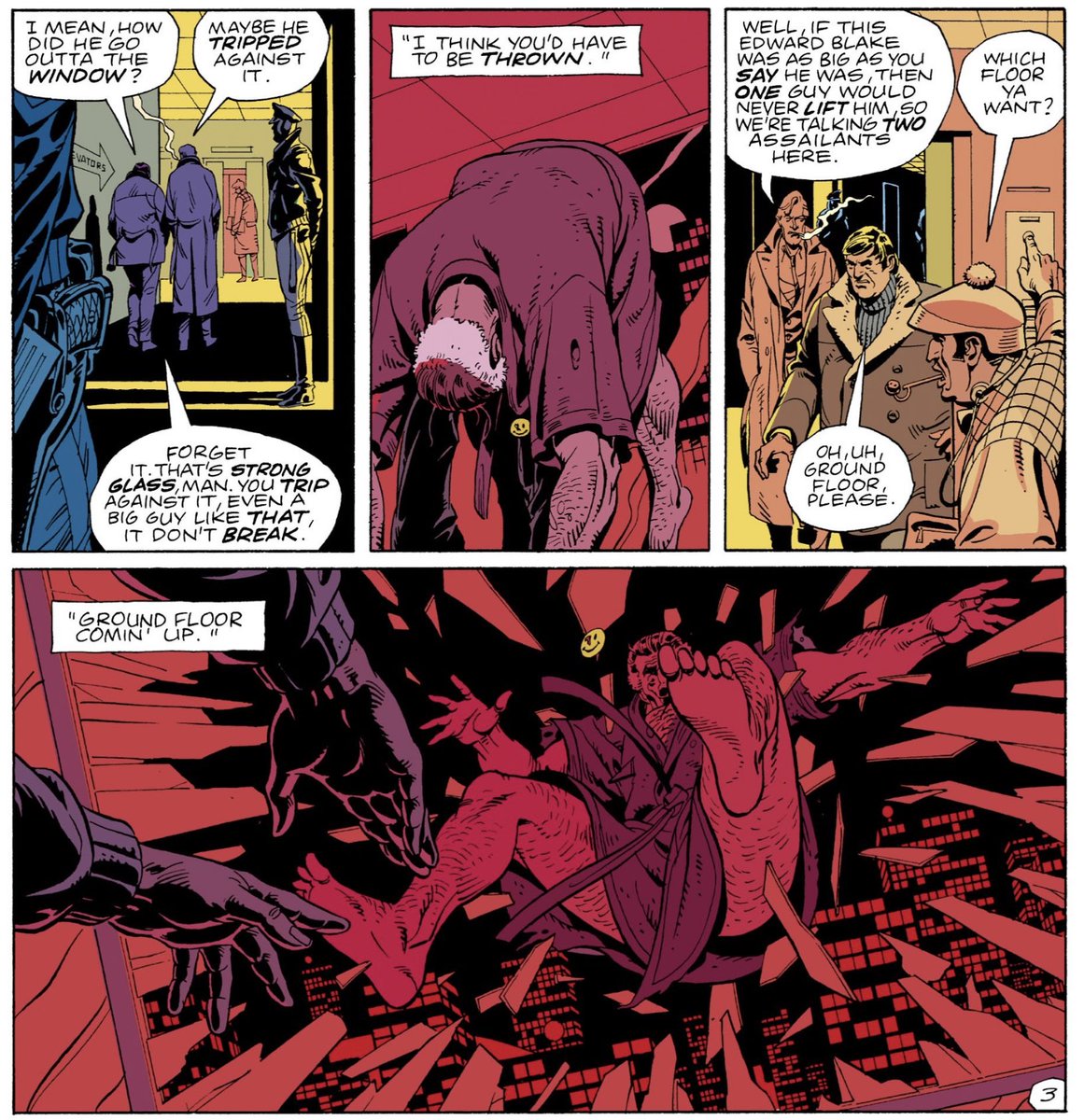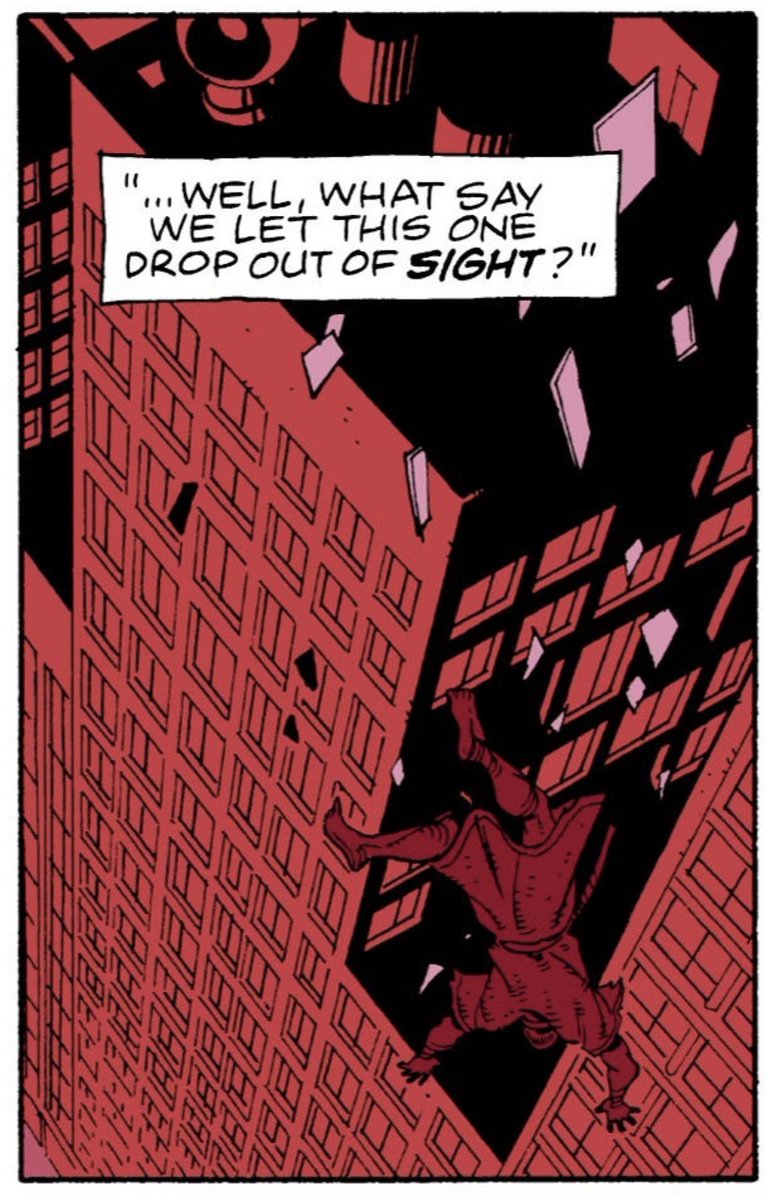
It has been a very long year, in terms of “Star Wars” content.
So #NowWatching “The Last Jedi.”
Here I joke, and suggest it’s a real shame they haven’t made any “Star Wars” since, as there’s a real gap in the market.
So #NowWatching “The Last Jedi.”
Here I joke, and suggest it’s a real shame they haven’t made any “Star Wars” since, as there’s a real gap in the market.
“You did it, Poe. Now get your squad back here so we can get out of this place.”
“No, General... We can do this.”
I can’t imagine how this story about a hotshot arrogant roguish pilot who needs to learn to listen to women - a recurring motif in the film - could ruffle feathers.
“No, General... We can do this.”
I can’t imagine how this story about a hotshot arrogant roguish pilot who needs to learn to listen to women - a recurring motif in the film - could ruffle feathers.
What’s interesting about the Poe storythread in “The Last Jedi” is that it becomes fundamentally self-proving.
In that it’s about the sort of arrogance of these sorts narratively-favoured roguish protagonists, and how fans and narratives fetishise that.
(Which was very timely.)
In that it’s about the sort of arrogance of these sorts narratively-favoured roguish protagonists, and how fans and narratives fetishise that.
(Which was very timely.)
It’s appropriate that “Poe’s Law” argues that a parody/deconstruction of a thing will be indistinguishable from the thing itself to a segment of the audience.
Where you have a large portion of the audience fetishising Poe, when the entire point is to deconstruct the archetype.
Where you have a large portion of the audience fetishising Poe, when the entire point is to deconstruct the archetype.
Poe is the sort of arrogant individualist outsider with no time for chains of command or due process, who trusts nothing more than his own judgment.
In the context of 2017, Poe is the kind of man who “has had enough of experts”, who has little patience for “the establishment.”
In the context of 2017, Poe is the kind of man who “has had enough of experts”, who has little patience for “the establishment.”
We’ve been so conditioned to expect that from heroes in these stories that even having him get dozens killed couldn’t dissuade a certain segment of fandom from insisting he was right.
And I suspect even the mismanagement of the current pandemic won’t dissuade that fetishism.
And I suspect even the mismanagement of the current pandemic won’t dissuade that fetishism.
“Bombers, keep that tight formation. Fighters, protect the bombers.”
It’s interesting that, thematically, “The Last Jedi” opens where “Rogue One” ended.
With the complete massacre of a bunch of below-the-line, non-capital-P protagonists.
But with an emphasis on their heroism.
It’s interesting that, thematically, “The Last Jedi” opens where “Rogue One” ended.
With the complete massacre of a bunch of below-the-line, non-capital-P protagonists.
But with an emphasis on their heroism.
The opening sequence suggests that Paige is as much a hero as Rey or Poe, even that she doesn’t necessarily have an action figure or a character poster or a tie-in miniseries.
Even if she does fighting in what is ultimately a pointless scuffle ordered by a “main” character.
Even if she does fighting in what is ultimately a pointless scuffle ordered by a “main” character.
The opening sequence focusing on Paige giving her life to do what is, in the moment, the right thing, is the antithesis of everything “Star Wars” became after “The Last Jedi.”
It’s the opposite of Lando leapfrogging Poe in “The Rise of Skywalker”, asserting his narrative import.
It’s the opposite of Lando leapfrogging Poe in “The Rise of Skywalker”, asserting his narrative import.
Similarly, it’s exact opposite of Luke Skywalker showing up in the second season finale of “The Mandalorian” to bail out the non-franchise-protagonist characters.
Because he is a capital-I “important” character, unlike these fringe “unimportant” characters.
Because he is a capital-I “important” character, unlike these fringe “unimportant” characters.
“They sent you? What is special about you? Where are you from?”
Naturally, that theme carries through “The Last Jedi” from the sequence with Paige Tico to the reveal of the nature of Rey’s parentage to the closing scene with Broom Boy.
It’s a welcome theme.
Naturally, that theme carries through “The Last Jedi” from the sequence with Paige Tico to the reveal of the nature of Rey’s parentage to the closing scene with Broom Boy.
It’s a welcome theme.
What’s particularly interesting about the importance that “The Last Jedi” places on this theme is that, in some ways, it is a return to the classic set-up from the original “Star Wars.”
Before “The Empire Strikes Back”, ahem, “subverted your expectations” by inverting them.
Before “The Empire Strikes Back”, ahem, “subverted your expectations” by inverting them.
In that, taken in isolation, the original “Star Wars” was a story about “Luke from Nowhere.” He was an orphan from the middle of nowhere, who just wanted to get away from there.
He could be anyone. More than that, anyone could be him. There was nothing “special” about him.
He could be anyone. More than that, anyone could be him. There was nothing “special” about him.
The idea that Luke had to be the son of somebody important to be important himself was only introduced in “The Empire Strikes Back.” It was introduced quite late in the drafting process.
It was a subversion of expectations - and a good one, at that. There is a reason it endures.
It was a subversion of expectations - and a good one, at that. There is a reason it endures.
Now, here’s the thing.
Fandom internalised that twist. Which is what fandom does. You might even argued they pathologised it.
But it’s notable that the twist was - yes - hugely controversial at the time. James Earl Jones didn’t believe it. Kids insisted Vader was lying.
Fandom internalised that twist. Which is what fandom does. You might even argued they pathologised it.
But it’s notable that the twist was - yes - hugely controversial at the time. James Earl Jones didn’t believe it. Kids insisted Vader was lying.
Indeed, the entire reason for the Degobah sequence in “Return of the Jedi” was for Lucas to assure fans that, “Yes it is true.”
(In other words, Lucas doubled down in the face of fan outrage. Unlike “The Rise of Skywalker.”)
(In other words, Lucas doubled down in the face of fan outrage. Unlike “The Rise of Skywalker.”)
Anyway, it’s interesting that “The Empire Strikes Back” would become so engrained in fandom that the simple act of choosing to return to the basic premise of “Star Wars” over it would be treated as a radical act of subversion by some fans.
I guess that’s just how time works.
I guess that’s just how time works.
“I wish I could put my fist through this whole lousy, beautiful town.”
As ever, it’s always worth pausing to acknowledge that “The Last Jedi” is a gorgeous film.
It is the best “Star Wars” has looked since “The Empire Strikes Back.” It is stunning to look at.
As ever, it’s always worth pausing to acknowledge that “The Last Jedi” is a gorgeous film.
It is the best “Star Wars” has looked since “The Empire Strikes Back.” It is stunning to look at.
Part of the reason for this is that Johnson sides something that Abrams doesn’t.
Abrams’ primary inspirations for “The Force Awakens” and “The Rose of Skywalker” are other “Star Wars” movies.
Johnson dares to look to other movies, like Lucas before him.
Abrams’ primary inspirations for “The Force Awakens” and “The Rose of Skywalker” are other “Star Wars” movies.
Johnson dares to look to other movies, like Lucas before him.
In that, like a lot of the so-called Movie Brats, Lucas was something of a pigeon picking from a variety of high- and low-culture inspirations and synthesising them into a pop mythology.
Johnson does the same, it’s what makes the film so impressive and fun.



Johnson does the same, it’s what makes the film so impressive and fun.
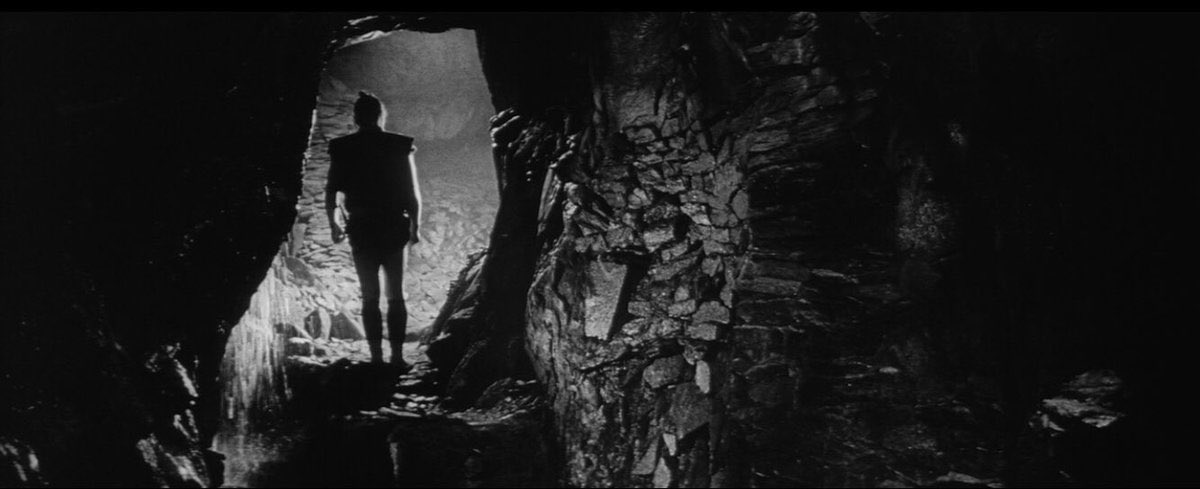
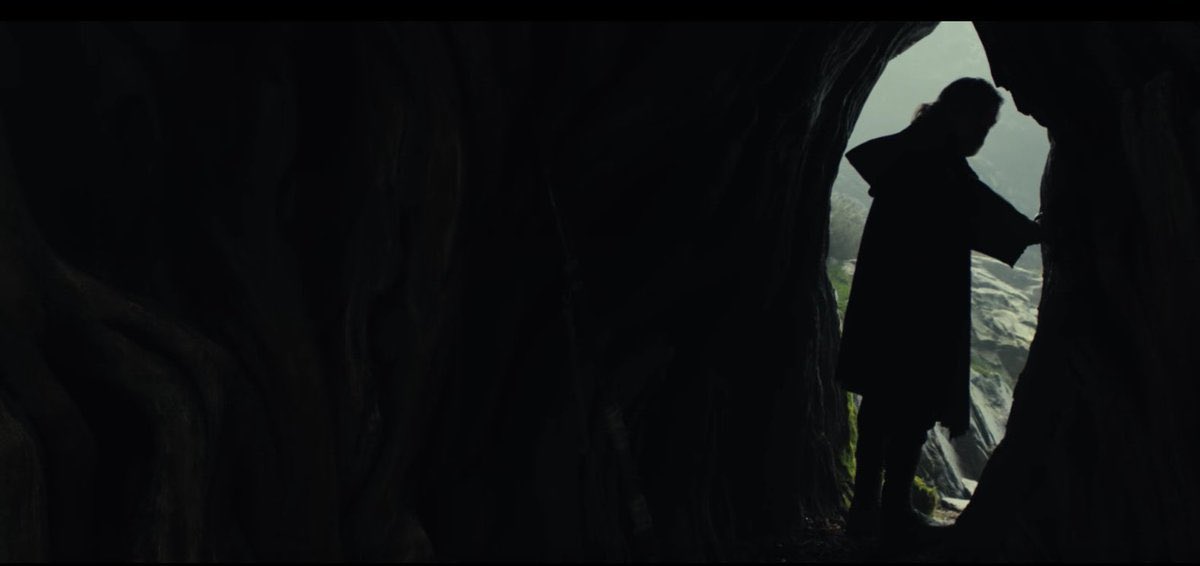
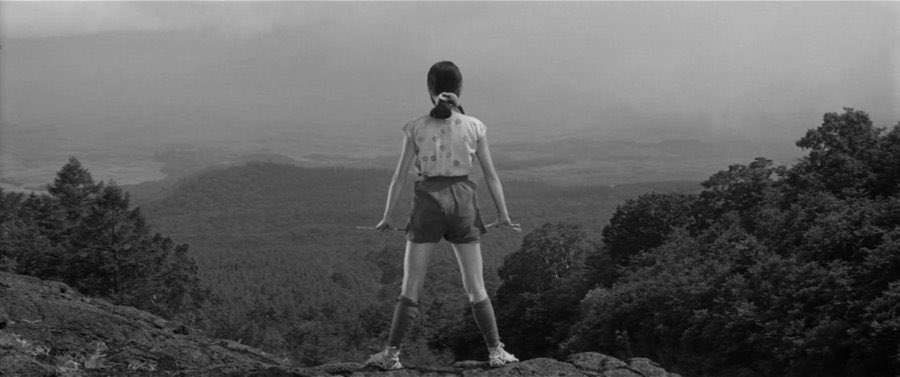
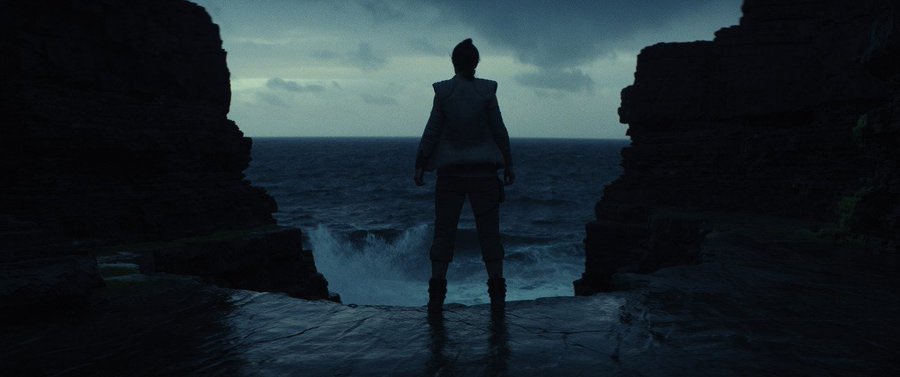
I’ve been accused of being overly harsh about “The Mandalorian”, but credit where it’s due.
Jon Favreau does something similar in the second season, drawing from pop culture *around* “Star Wars”, like “Jaws”, “Alien”, “Sorcerer”, “Battlestar Galactica.”

Jon Favreau does something similar in the second season, drawing from pop culture *around* “Star Wars”, like “Jaws”, “Alien”, “Sorcerer”, “Battlestar Galactica.”

“What do you see?”
“The island. Life. Death. And decay, that feeds new life. Warmth. Cold. Peace. Violence.”
“And between it all?”
“Balance. And energy. A Force.”
“The Last Jedi” returns to the more Eastern-influenced idea of “the Force” suggested in the original “Star Wars.”
“The island. Life. Death. And decay, that feeds new life. Warmth. Cold. Peace. Violence.”
“And between it all?”
“Balance. And energy. A Force.”
“The Last Jedi” returns to the more Eastern-influenced idea of “the Force” suggested in the original “Star Wars.”
Naturally, with the introduction of the idea of Luke Skywalker as the son of Darth Vader, and the emphasis on the binary light/dark sides of “the Force”, the “Star Wars” mythos became increasingly Christian after “Star Wars.”
There’s even an immaculate conception.
There’s even an immaculate conception.
“Luke, we are what they grow beyond. That is the true burden of all masters.”
This is also true of parents. At some point, parents accept that their kids will need to become their own people.
If parents do a good job, if everything works out, the ideal is their kids are better.
This is also true of parents. At some point, parents accept that their kids will need to become their own people.
If parents do a good job, if everything works out, the ideal is their kids are better.
After all, what’s the point in being a parent if you constantly need validation that you are better or more worthy or more deserving than your children?
It pains me that “Star Wars” fandom (and the franchise) reacted so strongly against this idea.
It pains me that “Star Wars” fandom (and the franchise) reacted so strongly against this idea.
In that, ultimately, the original “Star Wars” trilogy was about Boomer kids stepping out from the shadow of their Greatest Generation parents.
But in “The Rise of Skywalker” and “The Mandalorian”, those Boomers refuse to gracefully cede the floor to their own kids.
But in “The Rise of Skywalker” and “The Mandalorian”, those Boomers refuse to gracefully cede the floor to their own kids.
“Do you have something, a towel or something you can put on?”
Shoutout to Joanna Robinson for making this connection, but I love that on top of all the epic stuff, “The Last Jedi” is a story about online dating.
Down to the shirtless pics, the negging, the secret Nazism.
Shoutout to Joanna Robinson for making this connection, but I love that on top of all the epic stuff, “The Last Jedi” is a story about online dating.
Down to the shirtless pics, the negging, the secret Nazism.
In that many of the women I have met through online dating has the same story (or several) about that kind of dude.
The guy who initially has a number of warning flags, but who then seems intoxicating, but who eventually becomes bad news.
The guy who initially has a number of warning flags, but who then seems intoxicating, but who eventually becomes bad news.
This feels like an appropriate place to drop this article, which is one of the “Star Wars” articles of which I am most proud.
In which I look at the horniness of the franchise, which makes sense as a franchise built around coming of age stories.
them0vieblog.com/2019/12/12/of-…
In which I look at the horniness of the franchise, which makes sense as a franchise built around coming of age stories.
them0vieblog.com/2019/12/12/of-…
The coming of age sex metaphor in the original “Star Wars” was male-coded. Luke’s “torpedo” hits the right spot on the Death Star, penetrating the core, causing a climactic explosion leaving everyone smiling.
“The Last Jedi” offers a similar metaphor relatable to young women.
“The Last Jedi” offers a similar metaphor relatable to young women.
Shoutout to @frontastic for pointing out that Rey’s journey to self-discovery begins with a journey into a very... suggestive cave that makes the men in her life very uncomfortable.
Which provides a nice contrast to all the light swords and staffs on display.
Which provides a nice contrast to all the light swords and staffs on display.
“Ben! The fleet. Order them to stop firing. There's still time to save the fleet.”
The scene between Kylo and Rey in the throne room is beautifully and brilliantly framed as a repudiation of the flawed “redemption” at the heart of “Return of the Jedi.”
The scene between Kylo and Rey in the throne room is beautifully and brilliantly framed as a repudiation of the flawed “redemption” at the heart of “Return of the Jedi.”
In that Rey wants to believe that Kylo is a good man, just as Luke wants to believe that Vader is a good man.
And both Vader and Kylo provide enough doubt to allow Luke and Rey to believe they can be redeemed.
(This doubt includes not killing Luke or Rey.)
And both Vader and Kylo provide enough doubt to allow Luke and Rey to believe they can be redeemed.
(This doubt includes not killing Luke or Rey.)
Of course, Vader refusing to kill Luke (and Kylo refusing to kill Rey) is hardly the most selfless of acts, particularly when it comes to killing their own abusive boss.
But Vader conveniently dies in “Return of the Jedi”, allowing Luke and fans to believe in the redemption.
But Vader conveniently dies in “Return of the Jedi”, allowing Luke and fans to believe in the redemption.
In contrast, Kylo survives this betrayal of Snoke. And Rey asks him to do what Luke should have asked Vader to do at Endor that would have signalled an actual redemption: order an immediate unqualified surrender.
And Kylo refuses. Because he doesn’t want to redeem himself.
And Kylo refuses. Because he doesn’t want to redeem himself.
This is thematically important, because - even just structurally - the entire sequel trilogy requires that the ending of “Return of the Jedi” not be enough.
And, to be fair, “The Last Jedi” makes a much more compelling case than either of the films sandwiching it.
And, to be fair, “The Last Jedi” makes a much more compelling case than either of the films sandwiching it.
It’s also valid because we live in a world where we fought a grand mythic war against fascism and tyranny, only for the children of those who fought in that war to instead embrace the ideals of fascism.
“The Last Jedi” makes the perfect case for revisiting that fight in 2017.
“The Last Jedi” makes the perfect case for revisiting that fight in 2017.
“The mineral planet, Crait. An uncharted hideout from the days of the Rebellion.”
The decision to set the final battle of the salt world of Crait is another clever structural choice, indicating that “The Last Jedi” is an inversion or reversal of “The Empire Strikes Back.”
The decision to set the final battle of the salt world of Crait is another clever structural choice, indicating that “The Last Jedi” is an inversion or reversal of “The Empire Strikes Back.”
In that the salt world of Crait looks very similar to the ice world of Hoth, but while “The Empire Strikes Back” opens with a ground assault on the base, “The Last Jedi” closes on a similar ground assault.
It’s a very clever structural choice.
It’s a very clever structural choice.
While discussing Crait, it’s also worth pointing out that the clever decision to give the planet red soil lends the battle a very heightened and stylistic sensibility. (Like the red in the throne room.)
It suggests blood and gore, without pushing the movie beyond a PG-13.
It suggests blood and gore, without pushing the movie beyond a PG-13.
It also handily visually literalises one of the core recurring themes of “The Last Jedi”, the idea that this perpetual war is actually hurting the universe itself.
As evidenced by the film’s recurring interest in wildlife thrown out of balance: the porgs, the horses, the foxes.
As evidenced by the film’s recurring interest in wildlife thrown out of balance: the porgs, the horses, the foxes.
As mentioned, “The Last Jedi” returns to the idea of “the Force” extending beyond the petty squabbles of the Jedi and their royal bloodlines, but instead holds the universe together.
In “The Last Jedi”, the universe is torn: the samurai slash in space, the red dirt splashed.
In “The Last Jedi”, the universe is torn: the samurai slash in space, the red dirt splashed.
“Did you come back to say you forgive me? To save my soul?”
“No.”
In an era when the New York Times was running glowing folksy profile pieces on white supremacists, it was welcoming that “The Last Jedi” makes the point that saving lives is more important than forgiving fascists.
“No.”
In an era when the New York Times was running glowing folksy profile pieces on white supremacists, it was welcoming that “The Last Jedi” makes the point that saving lives is more important than forgiving fascists.
Incidentally, Luke’s final confrontation with Kylo is probably the character’s best moment in the “Star Wars” canon.
He finally, internalises the lesson Yoda taught him back in “The Empire Strikes Back”, that a Jedi “uses the Force for knowledge and defense, never for attack.”
He finally, internalises the lesson Yoda taught him back in “The Empire Strikes Back”, that a Jedi “uses the Force for knowledge and defense, never for attack.”
As ever, there is something very revealing about how we view masculinity that so many fans latch on to scenes like Vader or Luke tearing through corridors full of anonymous goons as “badass”, but so many fans were actively hostile to Luke’s self-sacrifice.
And, again, this interrogation of masculinity is a recurring theme in “The Last Jedi.”
Remember we discussed Poe learning to listen to women. (And accept that it’s possible for women to outrank him.)
Remember we discussed Poe learning to listen to women. (And accept that it’s possible for women to outrank him.)
Anyway, thus concludes “The Last Jedi.”
Whereas the second season of “The Mandalorian” closes with Moff Gideon modelling a $249.99 Dark Sabre, “The Last Jedi” closes on a little kid looking to the sky in wonder, holding like a broom stick found in every home’s utility room.
Whereas the second season of “The Mandalorian” closes with Moff Gideon modelling a $249.99 Dark Sabre, “The Last Jedi” closes on a little kid looking to the sky in wonder, holding like a broom stick found in every home’s utility room.
There is, incidentally, something to be said for the wave of franchises around 2014-2017 aiming to make it accessible and easy for kids to cosplay and role play as their heroes without having to shell out absurd amounts for licensed gizmos and dohickies.
The Peter Capaldi era of “Doctor Who”, under Steven Moffat, was conscious that you didn’t need to be a rich kid to cosplay as the Doctor.
The Twelfth Doctor often wore a hoodie instead of a lavish costume. He used “sonic sunglasses” instead of an expensive licensed screwdriver.
The Twelfth Doctor often wore a hoodie instead of a lavish costume. He used “sonic sunglasses” instead of an expensive licensed screwdriver.
So “broom boy” is the perfect closing image for “The Last Jedi.”
It tells young fans that their parents don’t need to be rich or “important” for them to matter. It tells them that they don’t need to buy expensive toys to play “Star Wars.”
I find that idea beautiful.
It tells young fans that their parents don’t need to be rich or “important” for them to matter. It tells them that they don’t need to buy expensive toys to play “Star Wars.”
I find that idea beautiful.
Anyway, thus concludes a long a winding thread. If you’ve been reading along, thank you!
And, if I don’t see you again beforehand, have a Merry (and Safe) Christmas!
And, if I don’t see you again beforehand, have a Merry (and Safe) Christmas!
It appears this thread has “set off” the usual suspects.
For suggesting “The Last Jedi” is good because it dares to look at some of the franchise’s key subtext from a perspective that isn’t just teen dudes.
(Not that there’s anything wrong with subtext aimed at teen dudes.)
For suggesting “The Last Jedi” is good because it dares to look at some of the franchise’s key subtext from a perspective that isn’t just teen dudes.
(Not that there’s anything wrong with subtext aimed at teen dudes.)
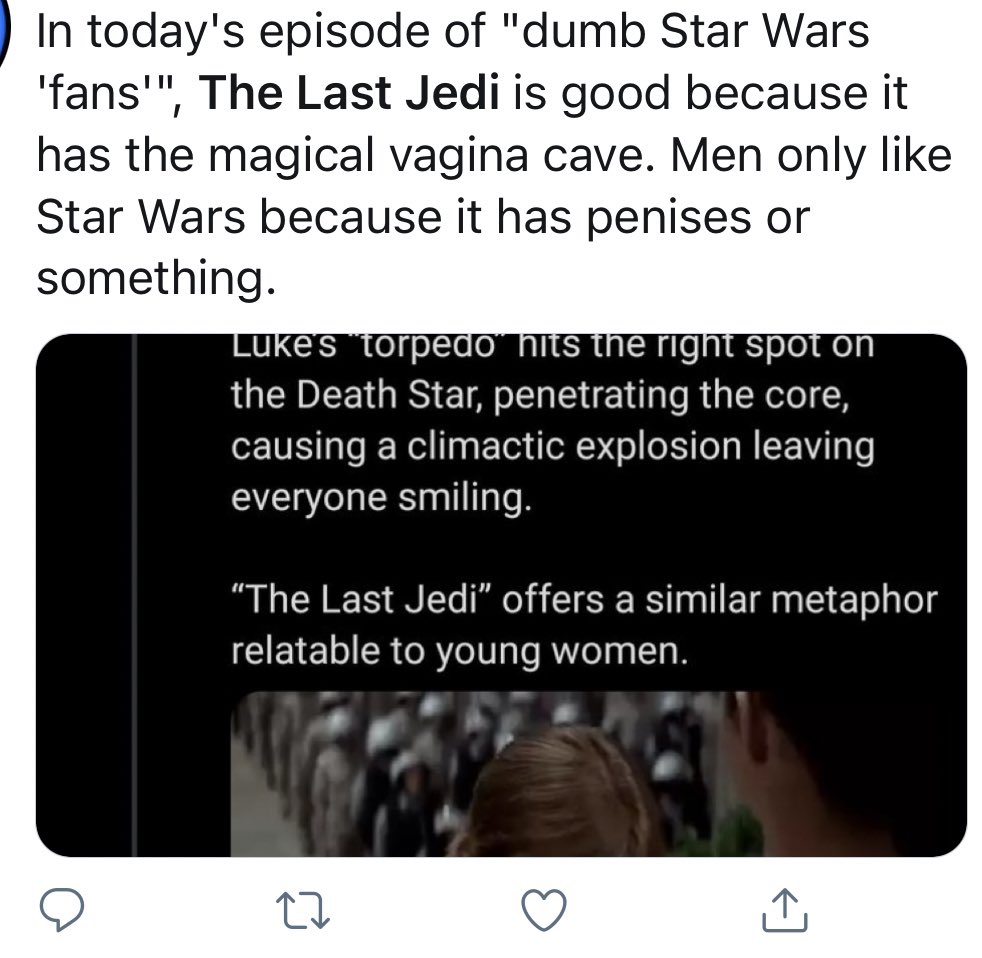
Which is really interesting to me.
Because nobody who thinks including more diverse perspectives is a good thing is suggesting that anything that appeals straight white dudes is bad or wrong.
Just that maybe you can occasionally consider other perspectives as well?
Because nobody who thinks including more diverse perspectives is a good thing is suggesting that anything that appeals straight white dudes is bad or wrong.
Just that maybe you can occasionally consider other perspectives as well?
Incidentally, I know that Twitter might not be the best way for people to read this thread, so I also put my thoughts on this re-watch of “The Last Jedi” into Letterboxd.
boxd.it/1x5WYN
boxd.it/1x5WYN
• • •
Missing some Tweet in this thread? You can try to
force a refresh











